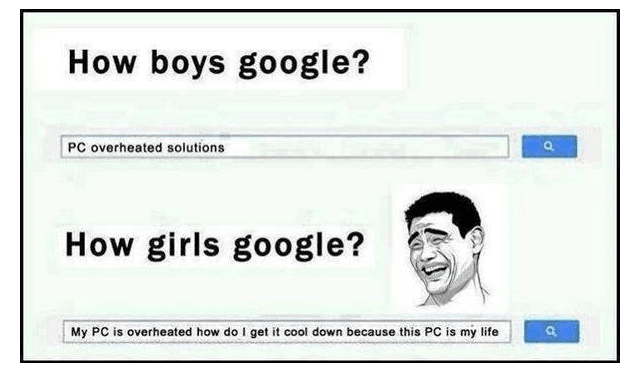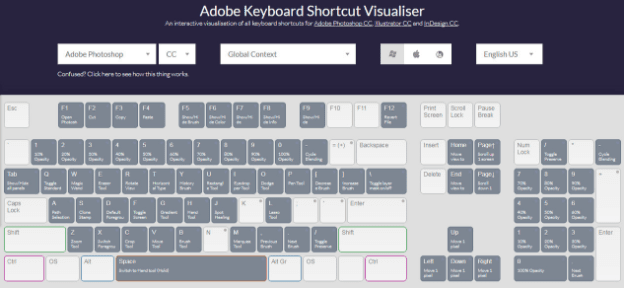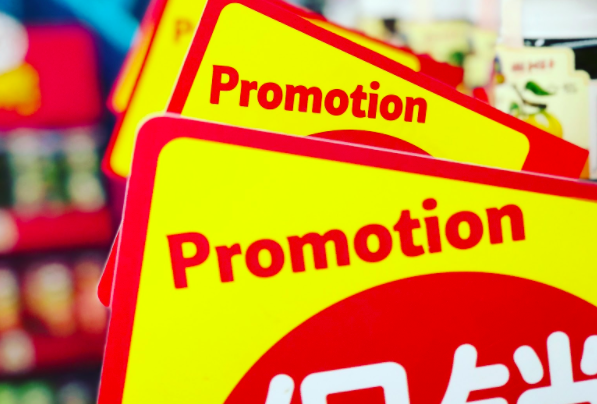
Helga Moreno is a passionate content creator and marketer at Ahrefs.com, a competitor research tools and SEO company. She is bold enough to believe that if there’s a book that she wants to read, but it hasn’t been written yet, then she must write it herself.
I bet you have noticed that some of your website pages naturally attract more links than others.
Maybe you even tried to find out what’s the magic behind it to generate more of these “link catchers.”
SEO experts refer to these pages as “linkbait.”
So, in this article you will be able to read:
- What is linkbait
- What makes a linkbait successful.
- How to find great examples of linkbait and how to come up with your own ideas.
Well, let’s start with the definition.
What is “linkbait”?
Linkbait is content created specifically for attracting links. It is something cool, valuable and unique, something absolutely irresistible for an industry, blogger, or influencer not to link to. These links help to improve the site’s rankings in search engines.
Actually, it can be any type of content, but as a rule, it’s one of the following:
- Infographic
- Comprehensive guides
- Interactive content (e.g. calculator, quiz, poll, survey)
- Image/gif/video(s)
- A niche-specific side project.
Undoubtedly, links help to increase the authority of your website. But that’s not all, far from it. They help the site attract more traffic from organic search, however, most pieces of “linkbait” also rank pretty well for many related terms. This drives massive traffic to the actual “linkbait” itself.
What makes a “linkbait” good?
According to Jonah Berger and his book, Contagious, there are psychological principles or “share triggers” that make people share content. The same principles also lead people to link to content.

So, when do people tend to share/link to things? They do it when those things:
- Help make them look good and back up their standpoint/narrative.
- Stir some kind of emotion (e.g. anger, awe, happiness/laughter, etc.).
- Make them attached to “top of mind” stories and current events. NewsJacking works this way.
- Offer practical value/utility. That is, something is genuinely useful, something that can become a good reference on a particular topic, like a study.
- Have already been shared/linked to by many others. People usually follow the crowd.
The video from TechFunnel.com adheres to many of these principles. It’s useful and it’s a good reference. It’s entertaining thanks to the custom imagery, illustrations, and detail, and it appeals to people’s emotions.
As a successful “linkbait” usually appeals to one or more of these principles, at a bare minimum, it will be something similar to a detailed guide with custom illustrations/imagery, nice formatting, and a unique perspective.
But what could be the best “linkbait”? The answer is an entire “side project,” where you effectively create a small product aiming to attract links. Twitter is a good example of side project created by podcasting platform Odeo during a company hackathon that became one of the million-dollar startups.
In a word, whatever your “linkbait” is, you should never forget about building in some of the following “triggers” to ensure that it corresponds at least some of the above principles:
1. Make sure that your content offers true value/utility
It may sound odd, but most people get wrong the concept of value. They measure value in content length/depth, word count, and other arbitrary attributes.
I am not going to diminish the importance of those things, but you should also remember that value is relative. Something super valuable to one person may be just a trifle to another.
As we are talking about SEO and marketing, in this world people generally find a lot of value in the extremely in-depth content like case studies.
But if we look at the backlink profile for the popular design blog, Abduzeedo.com, we can see that people in the design world value curation, like showcases of inspirational examples a lot more.
The takeaway is that “linkbait” is about creating content that is valued by your target audience. All the rest is so-so.
2. Make sure that your content is funny or at least invokes some emotions
Let’s imagine that I’ve told you a funny joke. Would you just smile and forget about it or would you tell it all your friends? Most of you will choose the latter option.
People like to share funny stuff.
If we are talking about real world, this is done verbally: by telling a droll joke to friends in the pub. But online people share gags on Twitter, Facebook, Tumblr, their own websites, etc.
If you can make something both funny and relevant to the topic, it’s almost always an infallible way to get a bag of links.
If you don’t feel like using humor in your content, try to stir another emotion:
- Awe
- Surprise
- Excitement
- Anger
3. Make your content visually attractive
Do you remember that it’s a four-step process to make somebody link to your content?
- “See” is the first step. It occurs when the potential linker comes across your “linkbait” for the first time.
- “Consume” is the second step. Here users click and consume the content.
- “Enjoy” is the third step. The users enjoy the content and it makes a lasting impression on them.
- “Link” is the final step. Users take the bait and link to the content.
What happens if your “linkbait” isn’t very visual? People never get to the stage where they are likely to link. Everything stucks somewhere between “consume” and “enjoy.”
This happens because visuals help people to consume content much quicker and easier. This increases the chances that a person will enjoy the content you are offering and end up with sharing it or linking to it.
So, if a non-visual piece of content or a blog post is getting heaps of links, it has great chances to become a “linkbait” with a bit of a makeover.
For instance, this is what FastPrint did a few years ago when they created their Adobe Keyboard Shortcut Visualiser.
The web page currently has 263 links from 126 referring domains.
4. Make your content “newsworthy”
If you want to get links from big news websites, incorporate some newsworthy elements into your content.
There is a whole list of things reporters find newsworthy, like conflicts, incidents, scandals and so on. I won’t highlight all of them here.
However, there is one strategy that is worth mentioning because it can make almost anything newsworthy. It’s newsjacking.
Newsjacking is a process of seamless combination of an already trending story/topic with whatever your brand does.
How can you find good examples of ‘linkbait’ and come up with “linkbait” ideas of your own?
Analyzing what’s working for your competitors is the simplest method to find great “linkbait” examples. They will help you to come up with your own ideas as well.
Let’s imagine that you run an event planning company. Find your biggest competitor and take a look at their most linked-to pages in your favorite SEO & marketing tool.
If you’ll find something like an absolutely stunning piece of content with more than 650 referring domains, it would be pretty hard to take it to a whole new level, so continue searching. It makes no sense in trying to surpass the perfection.
Go through the same process, I am sure you will find another hypothetical competitor having a great concept but a standard outdated article.
You can take this to a whole new level and transform it into a piece of “linkbait” in order to attract a lot of links.
You can do this by:
- Adding more services
- Keeping the content up to date
- Improving the formatting/design (consider creating an infographic)
- Improving the written content.
But what should you do if there aren’t too many examples of ‘linkbait’ in your industry?
Well, the process is simple. Go and seek out for inspiration in other industries.
Ok, it’s possible to get inspiration from random, totally unrelated pieces of “linkbait,” but it’s also helpful to pick out ideas from semi-related industries.
We took an example of event planning company. Look for inspiration from industries like, “holiday,” “wedding,” “anniversary,” “food/cuisine,’ “sightseeing,” “birthday,” “gifts,” “flowers,” “traveling,” etc. (i.e. industries related to the reasons why people actually hire an event planning company).
Then the task is to find highly linked-to “linkbait” in these semi-related industries.
You can start searching for infographics, which is usually a good way to find a winning ‘linkbait’ concept. Good infographics tend to attract a lot of links.
Visual.ly is the best place to start your research. Select your category and order the results by “faved”. You will get the most popular content first. Most likely the pieces will have tons of links.
It won’t take you long to come across some great ideas here.
For example, take a look at the very first infographic “9 Unbelievably Simple Steps For Perfect Make-Up”. It’s been viewed 557,005 times and has 236 faves. It also has 104 links from 49 referring domains.
What event-planning ‘linkbait’ ideas flashed through your mind when you viewed this graphic?
People hire an event-planning company when they want everything to be absolutely perfect on their special day. They also want to look gorgeous, so advice from the world famous trendsetters and stylists would probably attract an array of links.
Do a Google search after you come back with your ideas and you’ll find exactly what you are looking for, your future piece of “linkbait.”
Please note that I brainstormed and searched for ideas for a few minutes only. If you spend an hour or two browsing visual.ly or sifting through competing sites, you will surely find hundreds of great “linkbait” ideas.
Promotion of your “linkbait”
There is an opinion that a built “linkbait,” as well as other forms of content, will draw people even without promotion from your side.
That’s not true. If potential linkers never actually see your content, how will they ever link to it? (Do you remember our “see” – “consume” – “enjoy” – “link” graphic from above?)
There is a simple 3-step promotion plan for your next piece of “linkbait”:
- Tell your existing audience about it via the owned media. If you run a blog, you let your subscribers know that you have published new content. You also tweet it from your official Twitter account and share it on Facebook.
There are two benefits of using owned distribution channels for content promotion:
- They’re either free or at least extremely cheap.
- It takes only a few minutes to share content via these channels.
These are a quick win when promoting “linkbait”.
What should you do if you don’t have a particularly large audience of your own yet? Just try to partner with someone who does.
- Use “paid media,” i.e.: pay for exposure to your intended audience
Let’s imagine that you were trying to promote this article: 5 Tips For Effective Video Marketing.
Use the power of paid media platforms like Facebook ads. They allow to easily target people that would enjoy your content, such as:
- Freelancers
- Users who live in the US, UK, Australia, etc. (i.e. are likely to be English speaking people)
- Facebook Page admins – this is a good indicator that they have their own website and may have the power to link.
But you should consider not only ads but:
- Sponsored posts
- Paid amplification, which is paying an “influencer” for a tweet of your content from their account
- Content discovery networks like Taboola, Quuu, Outbrain, etc.
- Outreach or “earned media.”
For following info will be useful for those who are not familiar with “outreach”. The technique basically involves reaching out to people who might enjoy your content by letting them know that it exists.
The main idea behind it is that if they like your content they may link to it or at least share it, which is also not bad.
But this article is not about outreach, it deserves a separate guide and you can easily find plenty of them on the net, so I won’t discuss all the hacks of conducting it.
Nevertheless, I will mention one significant aspect: if your goal is link building, your prospects should have the power to link.
I don’t say that they should necessarily have their own website or blog, but they must be active in the blogosphere. They should at least be blogging somewhere even if it’s a guest post on another site.
In truth, “Linkbait” is not just about creating something unique or visually appealing.
You’ll need a little more than that to be a success and attract some links. What you’ll need is a combination of well-crafted content, a well-defined audience that has the power to link to you, and a well-executed promotional plan.
And the last thing I would like you to remember: you won’t get any links to your brilliant content if people don’t know that it exists.
***
The views and opinions expressed in any guest post featured on our site are those of the guest author and do not necessarily reflect the opinions & views of TechFunnel.com.









